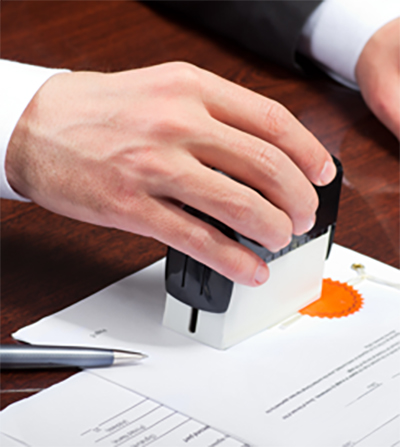Table of Contents:
- Introduction to OSHA Compliance
- Critical Benefits of OSHA Compliance
- Improved Employee Safety
- Enhanced Operational Efficiency
- Common OSHA Violations and How to Avoid Them
- Steps to Ensure OSHA Compliance in Your Workplace
- The Role of Training and Certification in OSHA Compliance
- The Impact of OSHA Compliance on Business Reputation
- Conclusion
Introduction to OSHA Compliance
The Occupational Safety and Health Administration (OSHA) is a regulatory body that ensures workplace safety across various industries in the United States. Established in 1970, OSHA’s mission is to “ensure safe and healthful working conditions for workers by setting and enforcing standards and providing training, outreach, education, and assistance.” OSHA’s regulations have drastically improved workplace safety, reducing injuries and fatalities over the past five decades.
One of the core aspects of OSHA compliance involves proper training and certification, such as onsite OSHA forklift training and certification CA. These programs are essential in maintaining high safety standards and reducing workplace accidents. Proper training ensures employees are well-versed in safety protocols, preventing common workplace hazards.
Critical Benefits of OSHA Compliance
Improved Employee Safety
Adhering to OSHA regulations significantly enhances the safety of employees. The Bureau of Labor Statistics states that in 2019, employers in the private sector reported 2.8 million nonfatal occupational illnesses and injuries. Proper OSHA compliance can reduce these numbers by addressing common hazards such as falls, exposure to harmful substances, and equipment-related injuries. For example, implementing rigorous safety procedures in high-risk industries like construction has proven to decrease the number of falls—one of the leading causes of workplace fatalities.
Employers have a duty to recognize such risks and establish a more secure work environment. Businesses can prevent accidents and protect their workforce by conducting regular safety assessments and ensuring that all safety measures are current. This proactive approach safeguards employees and fosters a safety culture within the organization.
Enhanced Operational Efficiency
OSHA compliance also contributes to improved operational efficiency. By standardizing safety protocols and reducing the incidence of workplace accidents, businesses can minimize downtime and maintain smooth operations. Companies adhering to OSHA guidelines often experience fewer disruptions, increasing productivity and lower operational costs. For instance, a manufacturing plant that follows strict OSHA regulations is less likely to face machine-related accidents, ensuring uninterrupted production schedules.
Implementing safety protocols also streamlines processes, as employees know the correct procedures to follow, reducing the time spent figuring out safety measures. This efficiency translates into better productivity and a more harmonious work environment. Moreover, businesses that maintain high safety standards are less likely to face legal issues, saving on potential legal fees and fines associated with non-compliance.
Common OSHA Violations and How to Avoid Them
Some common areas where businesses need more OSHA standards include inadequate fall protection, poor hazard communication, and insufficient machine guarding. Avoiding these violations requires proactive measures such as conducting regular safety audits, updating safety protocols, and focusing on continuous employee training. For example, fall protection violations frequently occur in the construction industry, leading to severe injuries and fatalities. Implementing proper safety nets and guardrails can mitigate these risks.
By conducting regular audits, businesses can detect and mitigate such risks before they cause mishaps or fines for noncompliance. Companies should also ensure that hazard communication is clear and accessible to all employees, including properly labeling harmful substances and detailed safety data sheets.
Steps to Ensure OSHA Compliance in Your Workplace
Ensuring OSHA compliance involves a series of ongoing actions:
- Conduct Regular Safety Audits: Performing frequent audits helps identify potential hazards and areas of non-compliance before they become serious issues. Audits must to be comprehensive and address every facet of occupational safety, ranging from personnel conduct to equipment inspections.
- Create and Update a Safety Plan: An effective safety plan outlines all necessary protocols and procedures to keep employees safe. It should be reviewed and updated regularly to comply with the latest OSHA standards. The plan should cover emergency procedures, hazard communication, and equipment maintenance protocols.
- Involve Employees in Safety Procedures: Employee involvement is critical. Employee participation in safety meetings and training programs helps promote a culture of responsibility and safety. Employees should clearly understand their roles in maintaining a safe workplace and feel empowered to report potential hazards.
The Role of Training and Certification in OSHA Compliance
Proper training is the cornerstone of OSHA compliance. All employees should undergo thorough training to understand the specific safety protocols relevant to their roles. Certification programs provide a structured approach to ensuring all workers meet safety standards. For instance, OSHA certification programs for forklift operators ensure they are competent in safely handling equipment, reducing the risk of accidents.
Real-world practical training examples include hands-on sessions and regular drills that mimic possible emergency scenarios. These practical exercises help employees retain the information and react appropriately during emergencies. Employers should also consider offering refresher courses and ongoing training initiatives to keep employees informed about the most recent safety procedures.
The Impact of OSHA Compliance on Business Reputation
Maintaining strict OSHA compliance can significantly enhance a business’s reputation. The public and potential employees view companies with vital safety records more favorably. A robust safety history can attract high-quality talent and ensure stronger partnerships with clients who value safety. For example, businesses prioritizing safety may find it easier to secure contracts with large corporations requiring their partners to have excellent safety records.
Furthermore, as customers are more inclined to interact with companies that prioritize employee welfare, a spotless safety record can increase customer trust. A good safety record can also be a unique selling point, differentiating a company from its competitors. In sectors like construction or manufacturing, where safety is paramount, a strong reputation for safety can be a significant competitive advantage.
Conclusion
Adhering to OSHA compliance is a legal requirement and a strategic advantage for any business. Some benefits are enhanced employee safety, improved operational efficiency, and a strong business reputation. Businesses can foster a more secure and effective work environment by investing in frequent safety audits, thorough training, and continual development. Ensuring all employees are well-trained and certified, such as through onsite OSHA forklift training and certification, plays a crucial role in achieving these goals.





